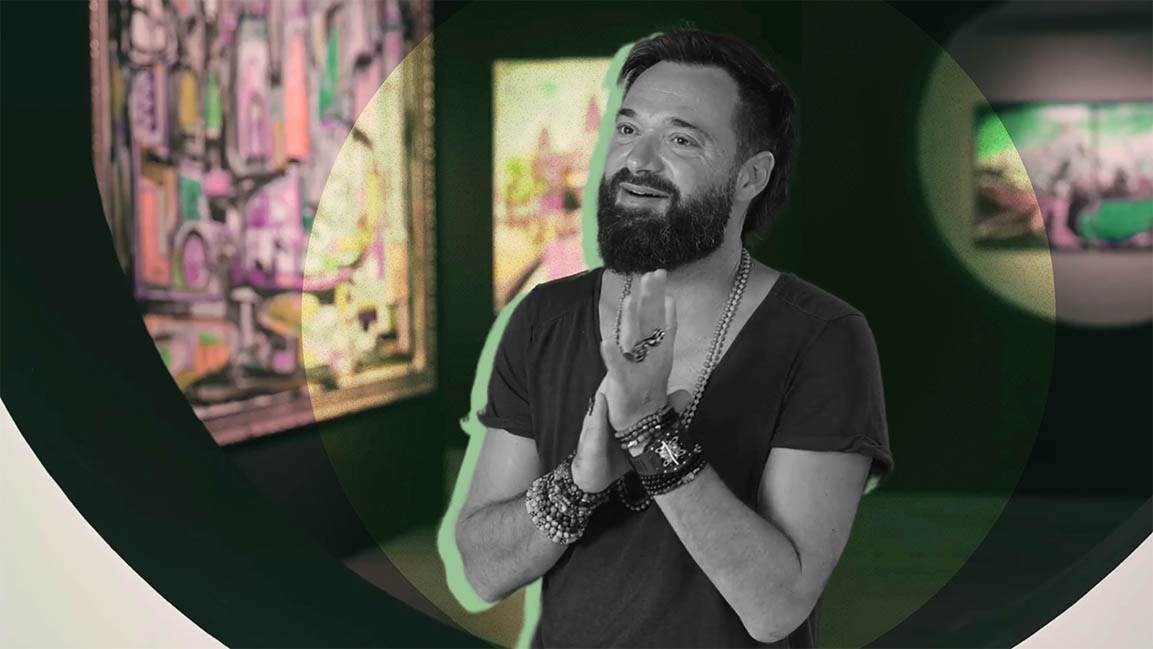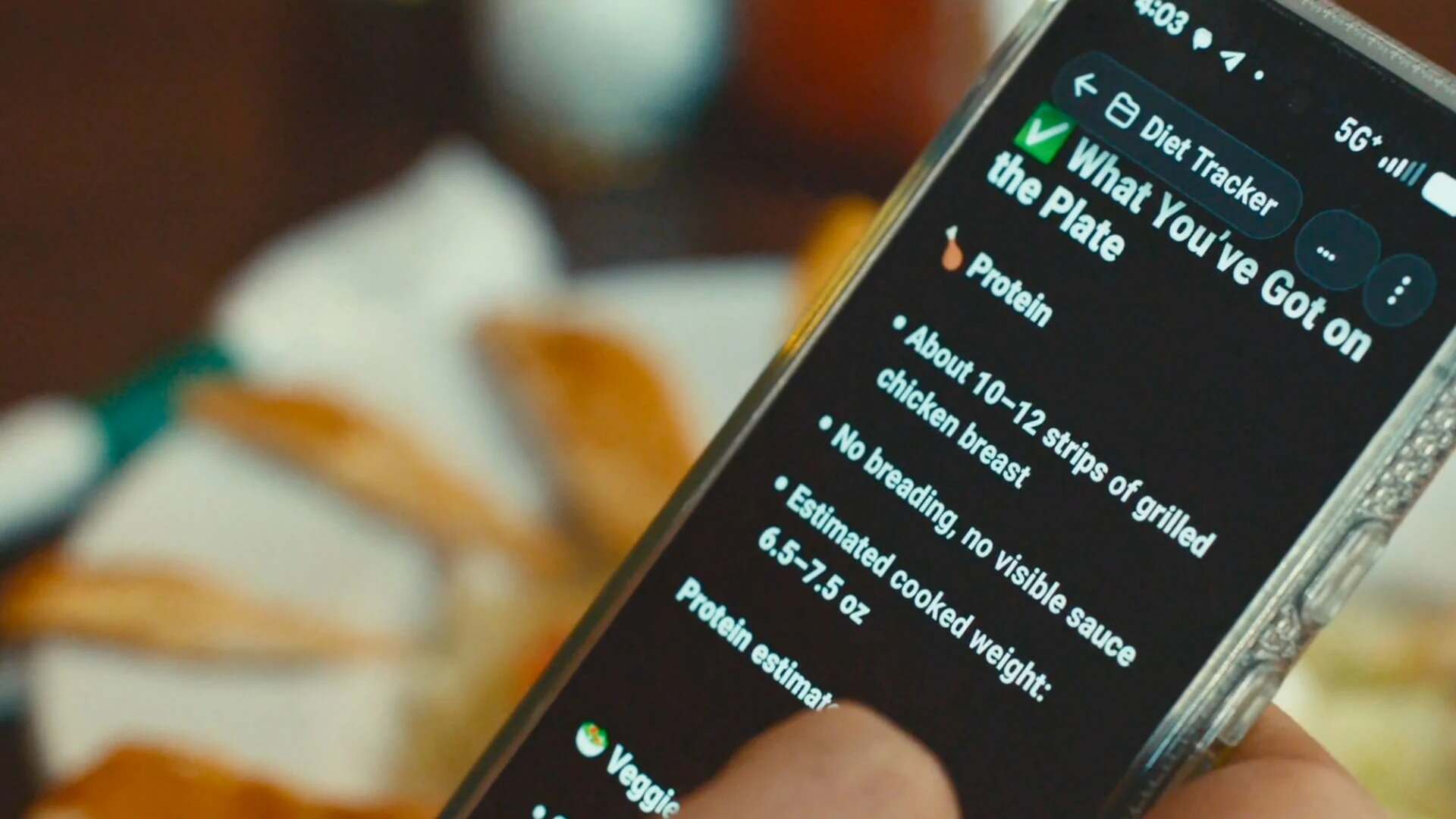- | 9:00 am
Art can be the antithesis of the metaverse, says Sacha Jafri
In an exclusive tour of his new facility, artist and philanthropist Sacha Jafri speaks about his latest work, digital trends, and art as a tool to reignite inspiration and empathy.

What would it take to send art to the moon? Dubai-based British artist Sacha Jafri is on this mission and has some of the biggest space agencies—from NASA and Spacebit to Astrobotic Technology— backing him to transport his artwork on an aerospace-grade aluminum plate to the moon next month.
“If my work isn’t linked to humanity, it’s pretty average,” says Jafri, wearing a grey shirt and iconic paint-splattered jeans, as we sit down to chat at his new studio in Al Quoz, where the smell of paint still lingers, and renovations are in progress.
As you enter through the door of the new facility, you notice a large knob in the shape of his logo—two stick figures of children holding hands inside a heart. The first painting covering the wall on the right is of a sprawling heart enclosing smaller hearts in different shades of fuchsia. And for those familiar with Jafri’s works, it’s easy to identify this painting as part of his collection that got him the Guinness Record for the largest painting on canvas in the world.
There are several artworks of Mount Everest, the Statue of Liberty, and the Pyramids of Giza. There’s an artwork on the fuselage from the outer skin of a decommissioned Airbus A320-211. On the upper floor is his office space, with white furniture and striking paintings adorning every wall.
Most well known for his collection Journey Through Humanity, Jafri is regarded as one of the most important living artists by the United Nations for his humanitarian efforts. His most recent collection for UNESCO, The Art Maze, was launched in celebration of the 50th anniversary of the 1972 World Heritage Convention, inviting viewers to reconnect to the world’s heritage despite global concerns.
WATCH THE VIDEO HERE
HUMANITY HAS LOST TOUCH WITH EARTH
Whether you see it or not, Jafri’s most famous works questioned, reflected, and inspired humanity in a free-flowing form. Is he concerned about the future of humanity? It’s a hefty question, but Jafri says his works are trying to fill a gap in the current generation, who seem disconnected from art and the Earth.
“Humans, especially the young generation, forget that humanity is driven by the soul. And when AI takes over, it strips the soul from that.”
Alluding to AI-generated artwork, he adds, “If we can reconnect humanity back to the soul of the Earth through beauty and humanity, through the power of art, then something really powerful and magical can happen, which AI can never achieve.”
JOURNEY THROUGH HUMANITY AND BEYOND
After the successful auction of his most famous work, Journey Through Humanity, which raised $64 million, and took him nearly 11 months, 22 hours a day to create at the height of the pandemic, he says there have been several learnings.
Recalling the process, he says, “my body disintegrated, I incurred two slip disks, my pelvis came out of alignment, my heels disjointed from my ankles; it was extreme.”
The rewards came in multiple folds when it inspired others to take on humanitarian causes.
“Taking things to that extreme is a very spiritual thing. I could only create for 22 hours daily by entering a very deep meditative state. My brain waves went theta, I was tapping into something out there, and I was in a state of surrender. You become much more powerful when you surrender. But we rarely force ourselves to surrender for that length of time,” he adds.
He explains how a purpose and pure intention to create a work of beauty steered his drive through his journey. “The real power of Journey Through Humanity was not the money raised, the media attention garnered; it’s how many people have been inspired to do more. To feel that I may be part of the process is a humbling thing.”
REFUELING THE HERITAGE OF THE WORLD
In his latest work, Jafri explores the world’s beauty through UNESCO’s World Heritage sites—divided into three categories: cultural, natural, and mixed. It will travel to 28 countries and six continents over the next four years. “I was interested in this project because it is the antithesis of the metaverse. I can’t stop the metaverse from eventually taking over a huge part of our lives, but I can help people remember the beauty in our natural world.”
Explaining his mission is not just to portray Earth’s fullness but to reconnect the younger generation today, he says, “It’s telling that this generation has turned their back to this world to connect with the digital world, a non-existent world.”
“We live on the most beautiful planet with beautiful interactions with people, beautiful mountains, forestry, oceans, rivers, wildlife, flora, and fauna; this doesn’t exist in the metaverse,” says Jafri.
Explaining how his travels opened his mind and eyes to the vastness of the planet, he says, “Our planet is beautiful beyond our dreams, but we have forgotten how to connect to it and look after it, how to be inspired by it, but most of all, how to be fulfilled by it.”
“This generation has lost any form of connection to the Earth. They need instant forms of gratification.”
He says the significance of UNESCO’s project, The Art Maze is that through it, he can remind us of the “beauty in our world.”
It’s about making the mundane magical again.
ON THINKING LIKE AN ARTIST
Having spoken at several forums worldwide, Jafri shares how he was baffled when invited to speak at the World Leaders Summit.
While passionate about humanity’s causes, he’s got a simple view of the world’s problems.
“If world leaders can see what artists can do by changing people’s mindsets with pure intentions, if they took the lead from how artists change minds of people by creating art, maybe they would change policies in their country,” he says.







































